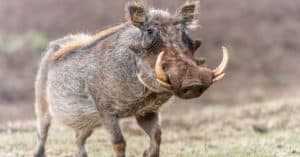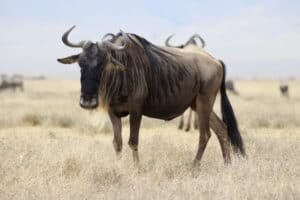We can study animals from all over the world thanks to science, but what about those that no longer exist? The list of extinct mammals could go on for ages, but each animal has a unique story. With today’s advanced research, we can learn so much from animals that haven’t even existed during our lifetimes!
Scientists who identify, analyze, and classify fossils are called paleontologists. These researchers use both the prehistoric data found in fossils and comparisons to related species that remain to draw conclusions about these extinct creatures. Carefully examined fossil evidence can help paleontologists understand more about an extinct animal’s social order, diet, behavior patterns, and more.
Join us as we go through 10 extinct mammals that will leave you utterly amazed.
1. Thylacosmilus
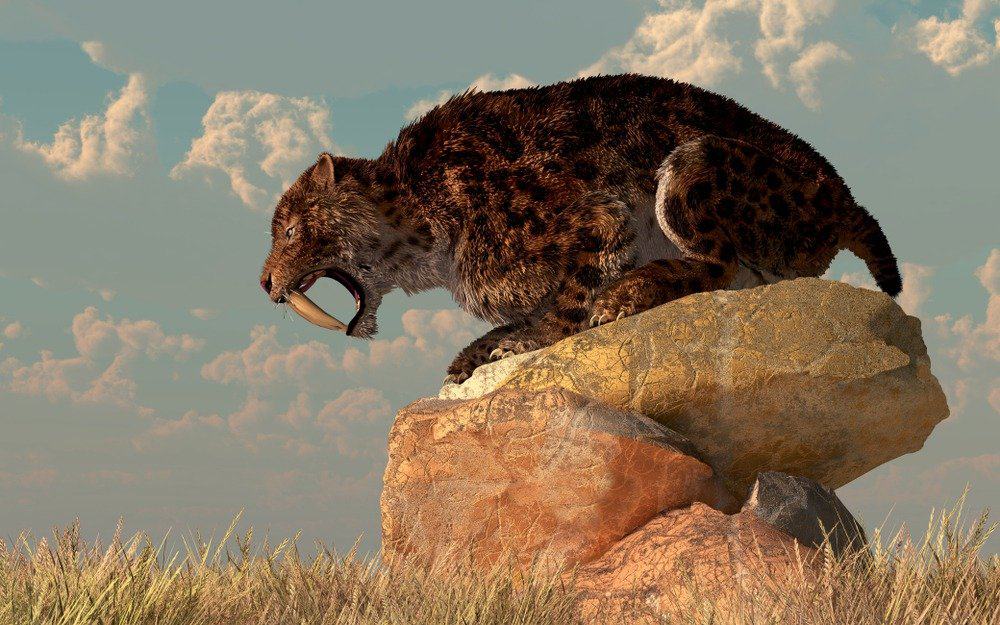
The saber-toothed tiger was capable of opening its jaw over 90 degrees
©Daniel Eskridge/Shutterstock.com
Often referred to as the “saber-toothed tiger,” this mammal is closely related to marsupials. This incredible extinct predatory animal can be most recognized by its two long, razor-sharp canine teeth. These teeth could grow longer than 7 inches and were carefully crafted to cut through tissue, allowing them to inflict the greatest damage on their prey. Not only did they have outstandingly long teeth, but an amazing jaw that could open over 90 degrees. The thylacosmilus was one magnificent animal that, unfortunately, was classified as an extinct mammal.
2. Eobasileus
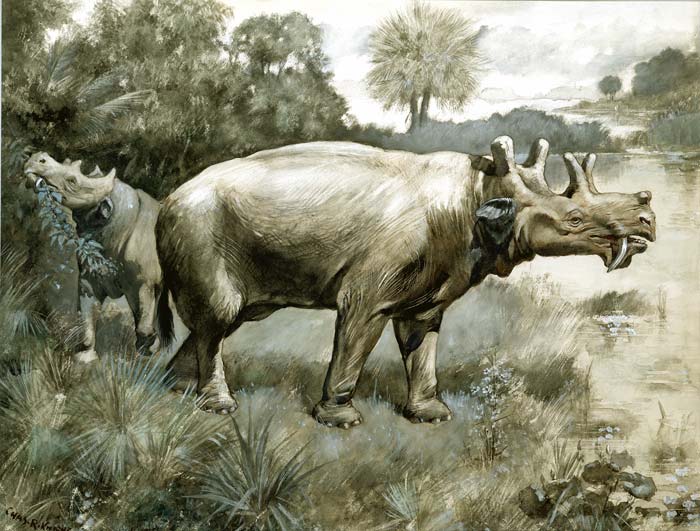
The Eobasileus had tusks on its jaw and weighed more than 8,000 pounds
© Charles R. Knight (1874–1953) / public domain – Original / License
Although it looked like a rhinoceros, the Eobasileus was a mammal species belonging to the order Dinocerata. This incredibly large beast was 13 feet long and weighed over 8,000 pounds. This creature had 3 pairs of horns atop its skull, similar to that of a giraffe. Eobasileus had an incredible pair of strong large tusks on its jaw and lived 45 million years ago.
3. Quagga
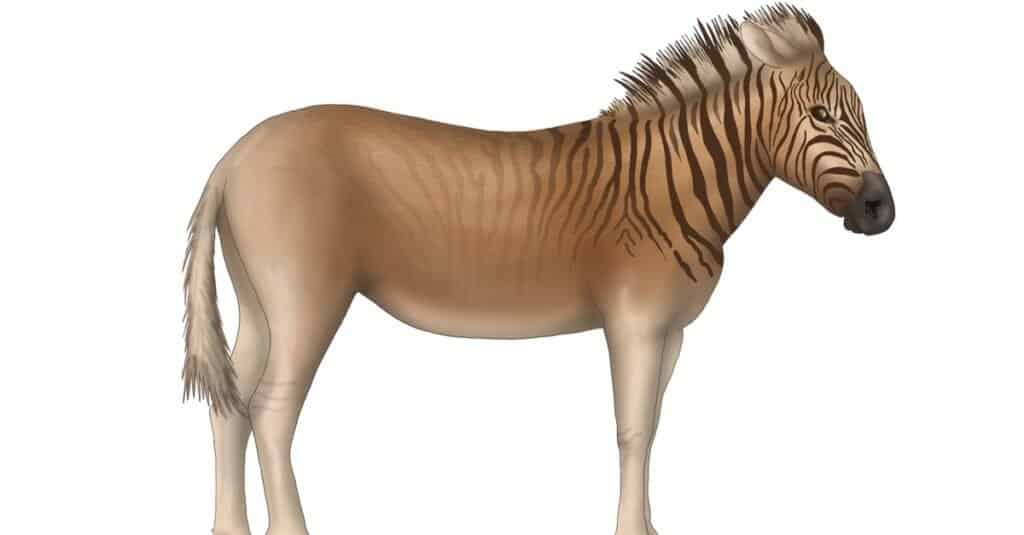
South
Africa
‘s quagga (Equis quagga) became extinct at the end of the 19th century.
©miha de/Shutterstock.com
The quagga was said to look like a mixture of a zebra and a horse. This is because the rear part of its body was all brown, and the front contained a variety of stripes. Each quagga had its own set of individual stripes. The last living quagga resided in the London Zoo throughout the late 1800s.
Additionally, this quagga was the only one ever to be photographed. The quagga had incredibly long legs made for endurance and speed, which allowed them to reach over 40 mph. They would also use these incredibly strong legs for defense and give an extremely hard kick if provoked.
4. Thylacine
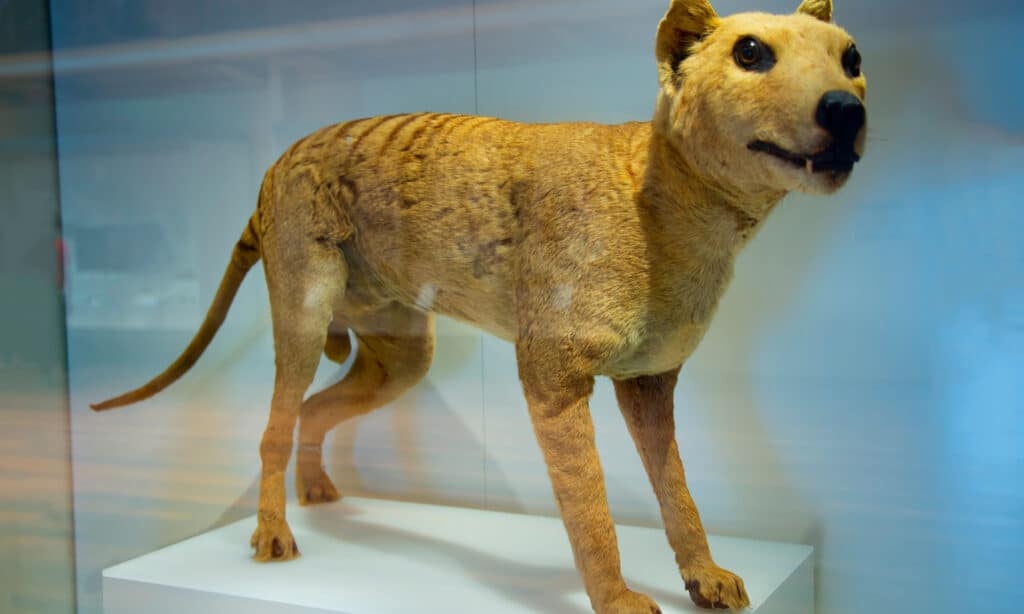
The last Tasmanian
Tiger
lived in captivity in the 1930s
©Adwo/Shutterstock.com
The Thylacine, also known as the Tasmanian Tiger, wasn’t much of a tiger at all. This marsupial mammal was said to resemble more of a medium-sized dog than it did a tiger. These incredible animals weighed anywhere from 30 to 60 pounds and had striking yellowy-brown fur. Thylacines were timid animals that communicated mainly through yaps and barks like dogs. Sadly their extinction was caused at the hands of humans through excessive hunting of the animal. The last Thylacine of its species sadly passed away in 1936 at the Beaumaris Zoo, where it was held in captivity.
5. Irish elk
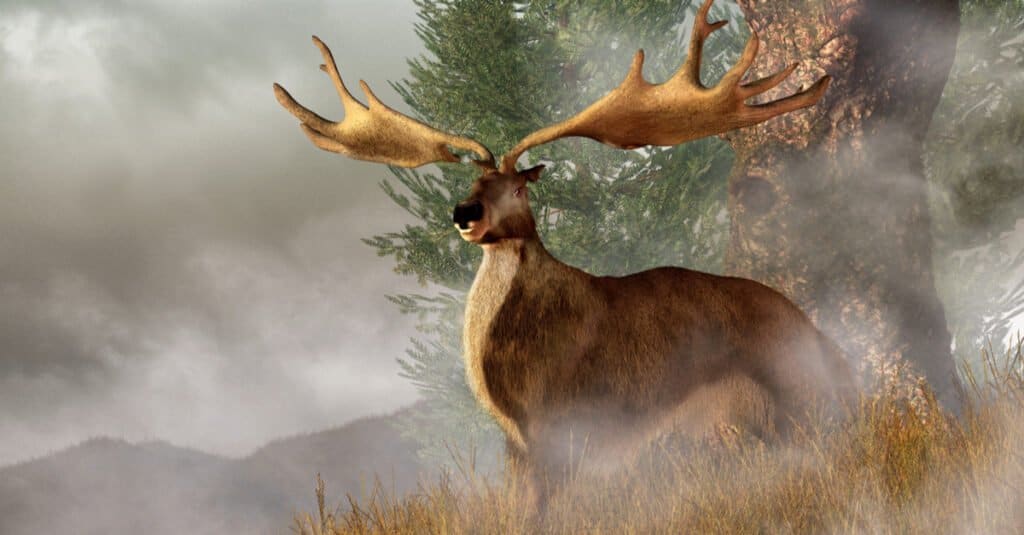
The Irish elk lived about 8,000 years ago and had massive antlers with a span of 12 feet
©Daniel Eskridge/Shutterstock.com
A funny fact is that the Irish elk was not actually an elk but the largest deer species ever known. These gigantic mammals were 7 feet tall and had massive antlers atop their head that spanned 12 feet. Just the antlers on their own weighed 90 pounds! These incredible beasts were said to have roamed the earth about 8,000 years ago before becoming extinct. Although scientists don’t know exactly why the Irish elk went extinct, there are a few theories. Some believe its size alone was the reason that contributed to its extinction, while other theories suggest a food shortage might have caused them not to be able to fulfill their dietary needs.
6. Pyrenean Ibex
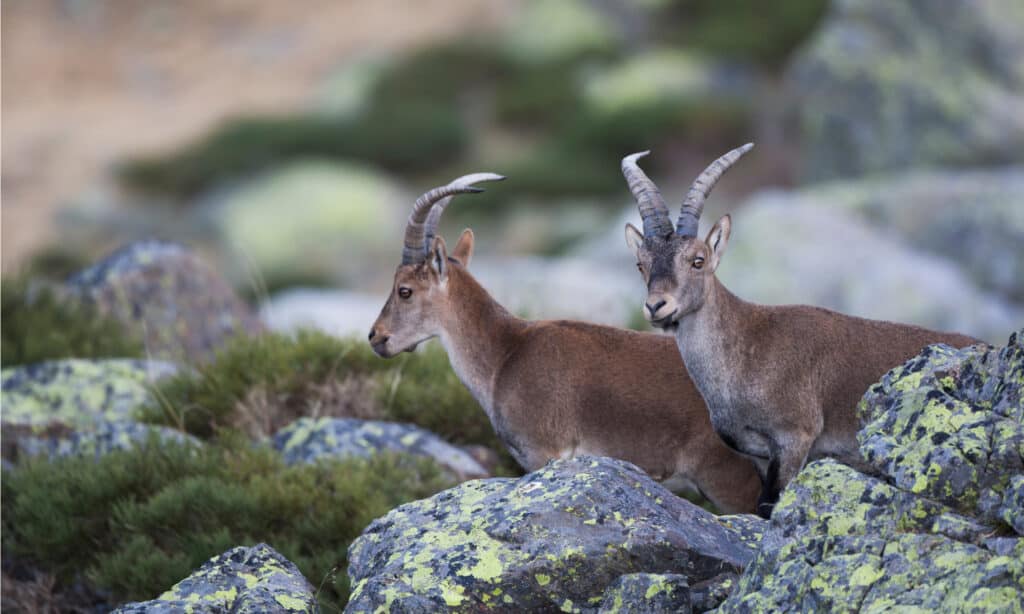
The Pyrenean Ibex was a cliff-dwelling mountain goat that lived in the Pyrenees
©Alexandre Boudet/Shutterstock.com
The Pyrenean Ibex was a species of goat that became extinct in the 2000s. These extinct mammals could be found living throughout the Pyrenees Mountains in Spain, France, and mountains throughout Asia and Africa. They chose to live on cliffs to protect themselves from predators. Scientists aren’t entirely sure what caused the Pyrenean Ibex to become extinct, but many believe it could’ve been due to hunting and diseases. Interestingly, scientists tried to clone the Pyrenean Ibex back into existence, but sadly the baby died due to health problems shortly after birth.
7. Steller’s Sea Cow
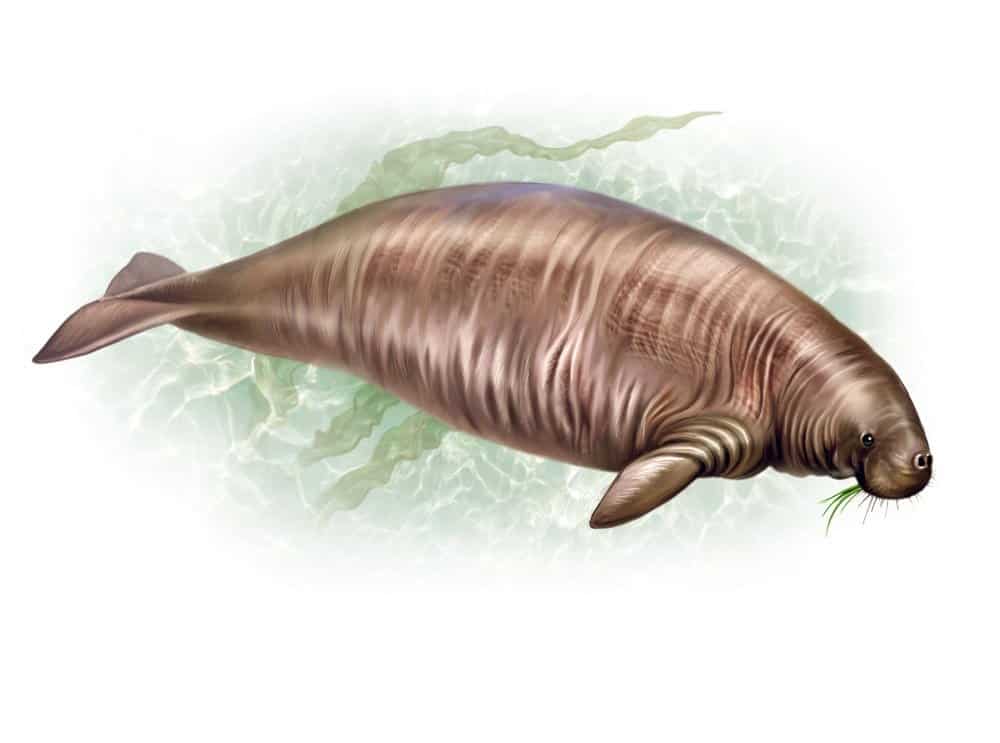
Steller’s sea cows were hunted to extinction for their fat and meat
©Liliya Butenko/Shutterstock.com
Steller’s Sea Cows were larger than manatees, one of the largest members of the sea cow family. These incredible aquatic animals could grow up to lengths of 25 feet and weigh over 8,000 pounds. They were called sea cows because they lived in herds and fed on seagrass near the water’s surface. Sadly this amazing creature became classified as an extinct mammal due to rapid hunting by humans. Sailors and fur traders would hunt them for their fat and meat, and since these sea cows weren’t fast swimmers, this made them an easy target.
8. Bali Tiger
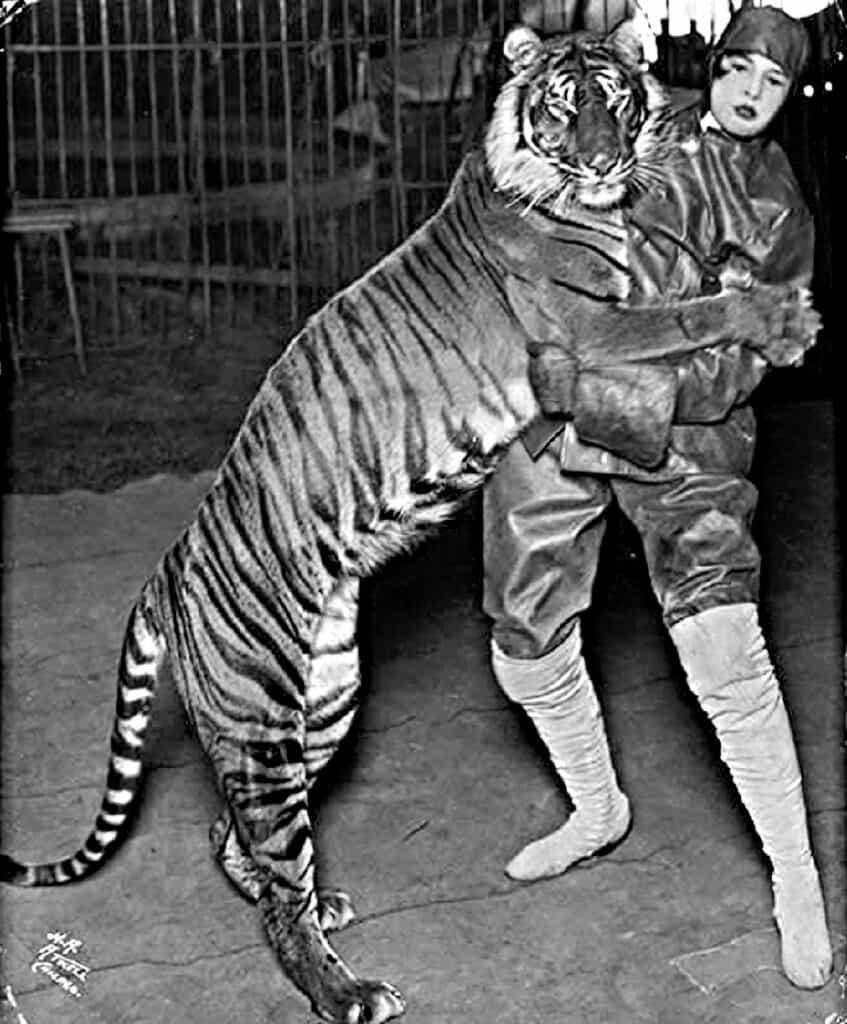
The Bali tiger became extinct during the 1950s
The Bali Tiger lived on the Indonesian island of Bali before its extinction. This majestic subspecies of tiger measured about 7 feet long and weighed over 200 pounds. Various prey was consumed by these carnivorous mammals, including monkeys and wild boars. They had a beautiful orange fur coat covered with dark and white stripes. The Bali Tiger became extinct in the 1950s due to hunting and destruction of their habitats, making it much harder for them to find prey.
9. Woolly Mammoth
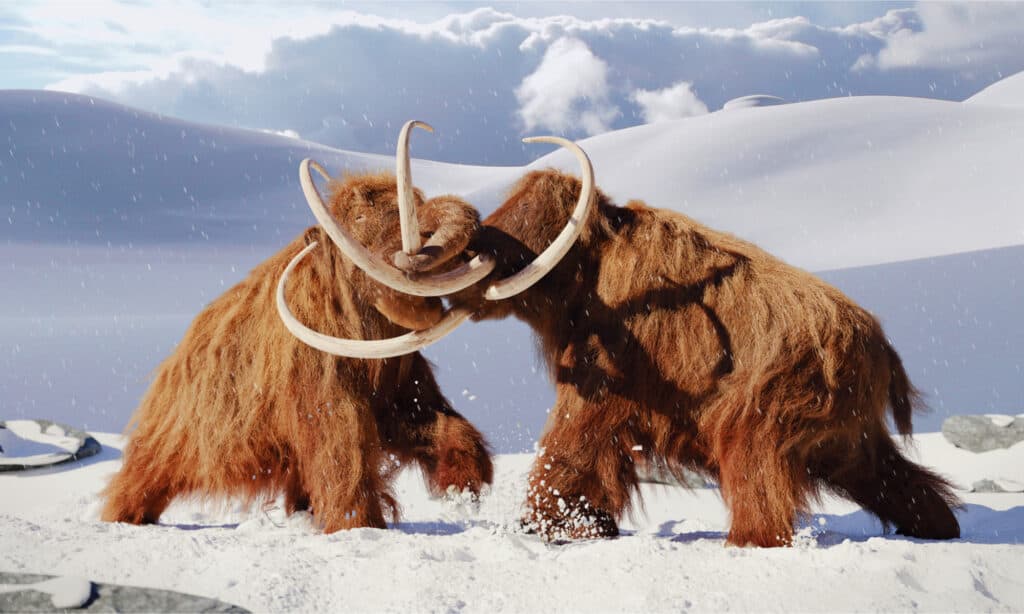
When King Tut ruled ancient Egypt, there were living mammoths on the planet.
©Dotted Yeti/Shutterstock.com
One of the most well-known extinct animals is the woolly mammoth. Woolly mammoths are close relatives of modern elephants and were incredible creatures. Unlike elephants today, woolly mammoths had thick brown fur that covered their entire bodies, and this was due to the extremely cold temperatures they lived in. Woolly mammoths became extinct over 10,000 years ago due to climate change, but there are theories to suggest humans may also have been a part of the reason.
10. Camelops
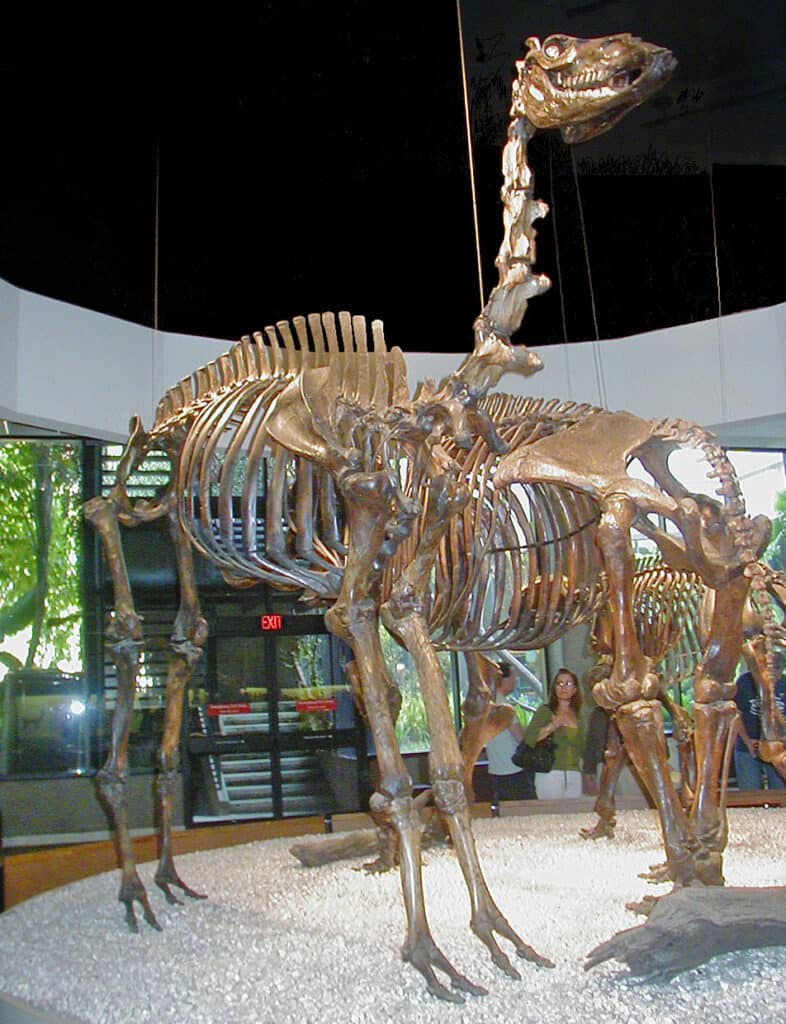
In terms of height, camelops stood about 7 feet (2.2 meters) tall.
A camelop is an extinct mammal of the subfamily of camels that roamed North America over 11,000 years ago. These incredibly large animals reached heights of 7 feet and weighed almost 2,000 pounds. According to some scientists, camelops are more closely related to llamas than to camels. As they roamed, they grazed on plants and shrubs. Climate change and the arrival of humans and hunting are believed to be why the camelops are now extinct.
Honorable Mentions: Other Mammals That Have Recently Gone Extinct
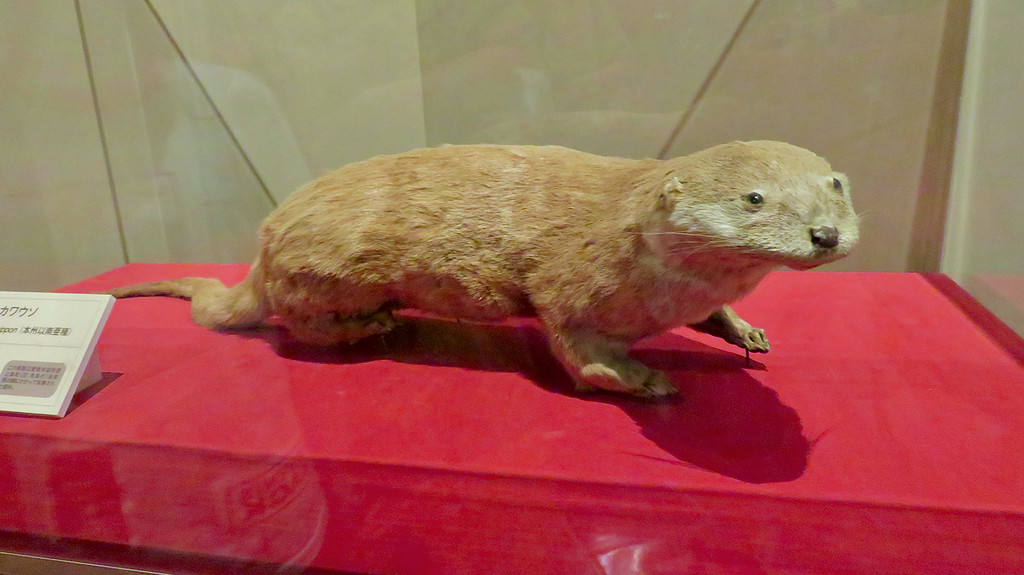
The Japanese river otter went extinct in 2012 due to hunting, habitat destruction, and pollution.
There are other mammals that have recently joined the ranks of those that no longer live on our planet. Below are some additional mammals that didn’t make our list, but have also gone extinct.
- Western Black Rhinoceros (Diceros bicornis longipes) This subspecies of the black rhinoceros, which used to roam the savannahs of Africa, was declared extinct in 2011. The main reason was poaching for its horns.
- Japanese River Otter (Lutra nippon) Declared extinct in 2012, this animal once numbered in the millions, but vanished due to hunting, habitat destruction, and pollution.
- Baiji (Lipotes vexillifer) Native to the Yangtze River in China, this freshwater dolphin species was officially declared extinct in 2007. Causes were gill nets, rolling hook fisheries, electrocution, and dynamite fishing.
- Eastern Cougar (Puma concolor couguar) This animal, which was an inhabitant of North America, likely went extinct in the 1930’s. Their populations went into decline from the 1800s onward due to habitat loss and being killed by European settlers who saw them as a threat to their families and livestock.
Animals That Closely Resemble The Extinct Species Listed
- The African Lion. Similar in size but not as robust and with longer limbs than the saber-toothed tiger.
- Rhinoceros. Although they were not closely related, this is the animal that Eobasileus most closely resembles today.
- Zebra. The Quagga is a subspecies of the zebra that was hunted down to extinction.
- Tasmanian Devil.
- Deer. The Irish elk was the largest living deer so it stands to reason that the deer is its close relative.
- Iberian Wild Goat. The Pyrenean Ibex was a subspecies of the Iberian Ibex, also called the Iberian Wild Goat.
- Manatee and Dugong. The Stellar’s sea cow was in the same family as the manatee and the dugong.
- The Tiger. The Bali tiger was a distinct subspecies of the tiger but was much smaller.
- Elephant. The elephant doesn’t have the hair as its ancestor, the wooly mammoth.
- Camel. Not as large as its predecessor, the modern camel stands at an average of 6 feet.
What Modern-Day Mammals Are in Danger of Extinction?
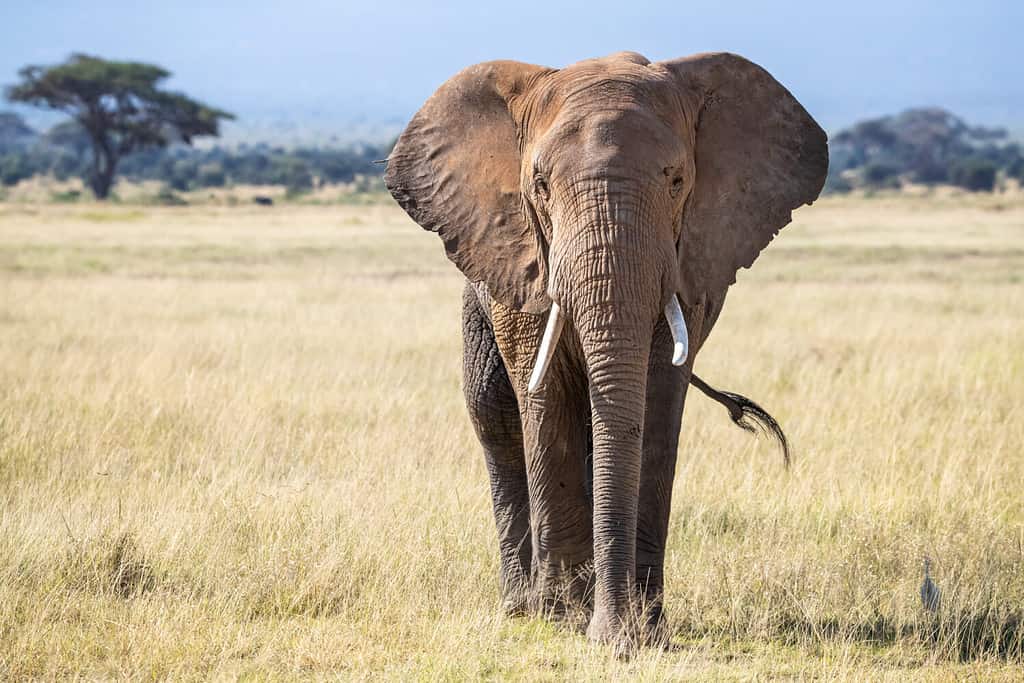
Earth’s largest land mammal, the elephant, is in danger of extinction.
©Jane Rix/Shutterstock.com
As we’ve discovered, some jaw-droppingly huge animals went extinct on Earth in ages past. Unfortunately, there are more large animals under threat of extinction. Overall, the IUCN has listed 5,766 different animal species as endangered. The criteria for a species to be added to the endangered list are as follows:
- Population reduction–A taxon’s population is reduced by 50-70% due to certain factors defined by the IUCN
- Geographic Reduction–The specie’s extant area is reduced to between 5,000 and 500 square kilometers
- Dangerously low number of adults–A taxon’s population only has 2,500 or fewer adults left
- Expected rapid decline
Below is a list of three of the largest animal species today that are facing extinction:
1. African Savannah (Bush) Elephant/African Forest Elephant/Asian Elephant
Elephants are the largest land mammals on Earth, and unfortunately, they are facing extinction. African forest elephant numbers have declined by over 86% in the past 31 years, while African savanna elephants have decreased by 60% over the last 50 years. Both cases have resulted from poaching and habitat loss. Meanwhile, Asian elephants are endangered due to habitat loss, fragmentation, and poaching. There are only an estimated 30,000 to 50,000 left in the wild. Currently, both African savannah and Asian elephants are listed as endangered, while African forest elephants are critically endangered.
2. Bengal Tiger/Siberian Tiger/Sumatran Tiger/Indochinese Tiger/Malayan Tiger/South China Tiger
Tigers are the largest cat species on the planet, but all 6 extant species are either endangered or critically endangered. Three species have gone extinct in the last 100 years: the Javan tiger (1970s), Bali tiger (1930’s), and Caspian tiger (2003). Tigers have faced the largest threat due to habitat loss and poaching (for their exotic coats, and in some places, consumption and use of other body parts for rituals, jewelry, and more).
3. Blue Whale
Blue whales are the largest animals on the earth, inhabiting the planet’s oceans. They were hunted in the past for their meat and blubber, to the point that their numbers dropped from an estimated 200,000 in the 1800s to 20,000 today. They are listed as endangered by the IUCN. Currently, their greatest threat is global warming.
The photo featured at the top of this post is © Daniel Eskridge/Shutterstock.com
Thank you for reading! Have some feedback for us? Contact the AZ Animals editorial team.




